Biohackers, open your boxes!
Published 14 March 2017 by Carine Claude
Biotinkerers, bio-artists and open science communities are miniaturizing their labs in order to bring DIYbio to the masses. Part 2 of our selection of boxes, kits and cases.
No need for expensive equipment or an over-equipped lab to hack hormones or sonify bacteria. In the spirit of OpenPCR, an open source project to extract and amplify DNA for analysis, DIYbio and open science communities are developing their own boxes, kits and cases for low-cost biohacking on the go. Episode 2 of our series on maker kits.
The Bento Lab box
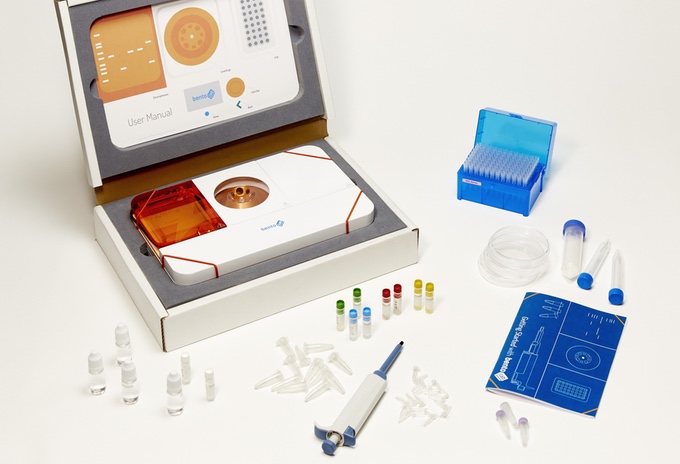
Bento Lab is an A4-size portable open source laboratory for genetic analysis. With it you can take a biological sample, extract its DNA and do a basic analysis. It has a number of applications, from identifying GMO to testing for lactose intolerance and molecular analysis of food, if only to know whether or not your hamburger contains horse meat. The box combines several devices commonly used in molecular biology: centrifuge to extract DNA from a biological sample (saliva, follicule, etc.), a thermocycler to make copies of sequences, and a unit to visualize the DNA and interpret the results.
The creators of Bento Lab, scientists and engineers from London Hackspace, launched their start-up Bento Bio at Makerversity in London. They were inspired by Hackteria’s OpenPCR project and the iGEM international synthetic biology competition. Bento Lab can be pre-ordered for £999 ($1,230), but they won’t be delivered until June. The start-up also sells a bonus starter kit for £169 ($210), which helps you learn basic techniques for your first experiments.
Bento Lab video demonstration:
The CRISPR Cas9 kit
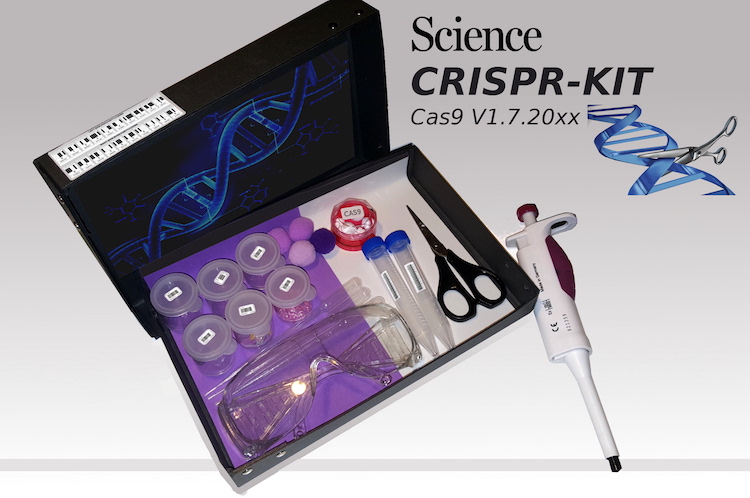
Some biohackers have a knack for business. Josiah Zayner, researcher in biochemistry, formerly at NASA and founder of The Odin (Open Discovery Institute), sells his DIYbio kits whenever he isn’t in the process of fecal biohacking. One of his featured projects is the CRISPR Cas9 genetic engineering kit—a technique for editing the genome—selling for $150 on his website.
Meanwhile, members of the Hackteria international biohacking network decided to “pimp” the kit to make it more fun. During a workshop at the Academie Schloss Solitude in Stuttgart in December 2016, artists and biohackers in residence hacked his kit to make this futuristic technology “more attractive”. The results of the workshop, titled “Make you own CRISPR-kit” are entirely documented on the Hackteria wiki.
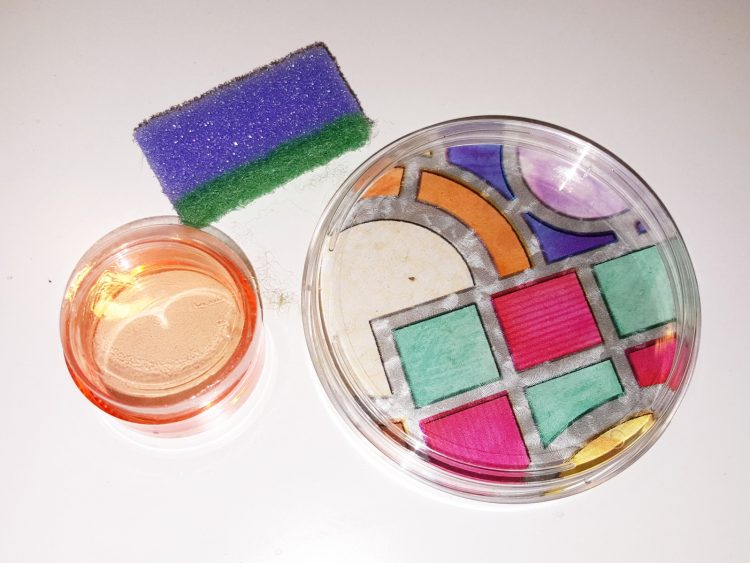
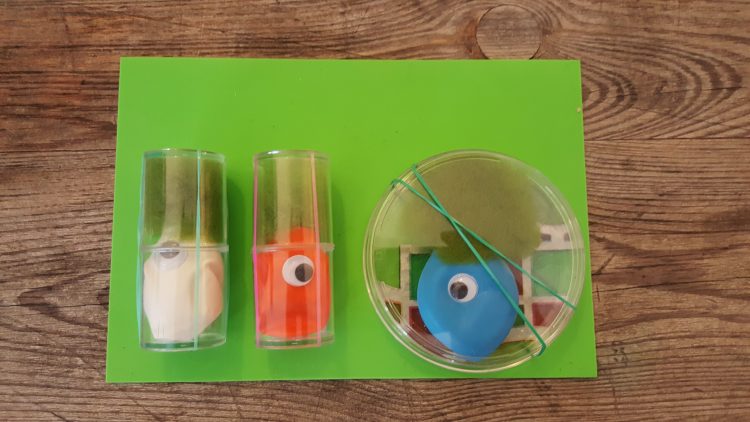
The Energy Bending Lab briefcase
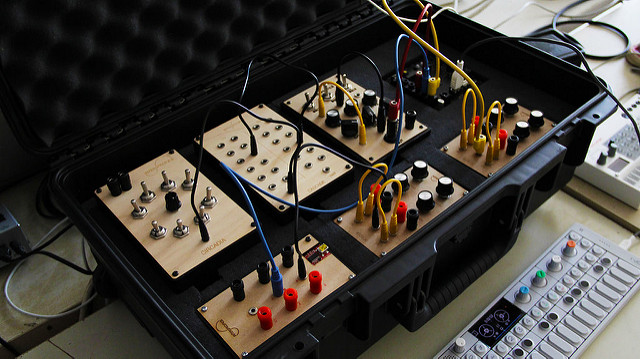
Interspecifics, a Mexican collective that roams the planet from biohacklabs to festivals (we met them at Transmediale in Berlin), has a fetish for interspecies communication. They also created the Energy Bending Lab, an instrument that sonifies micro-organisms in real time—or, that makes bacteria sing. The briefcase contains a customized modular synthesizer and signal processing tools that amplify and sonify the microvoltage produced by the organisms.
“The Energy Bending Lab was conceptualized as a DIY interspecies system,” Paloma López and Leslie García from the Interspecifics collective explain on their website. “The object explores the relationship between waveforms, matter, and the physical form of frequencies, seeking a pattern-based understanding of our context to illustrate the underlying order within the universe and human consciousness that appears to be intimately related to vibration.”
Performance by Leslie García and Paloma López recorded with the Energy Bending Lab:
The Estrofem Lab suitcase
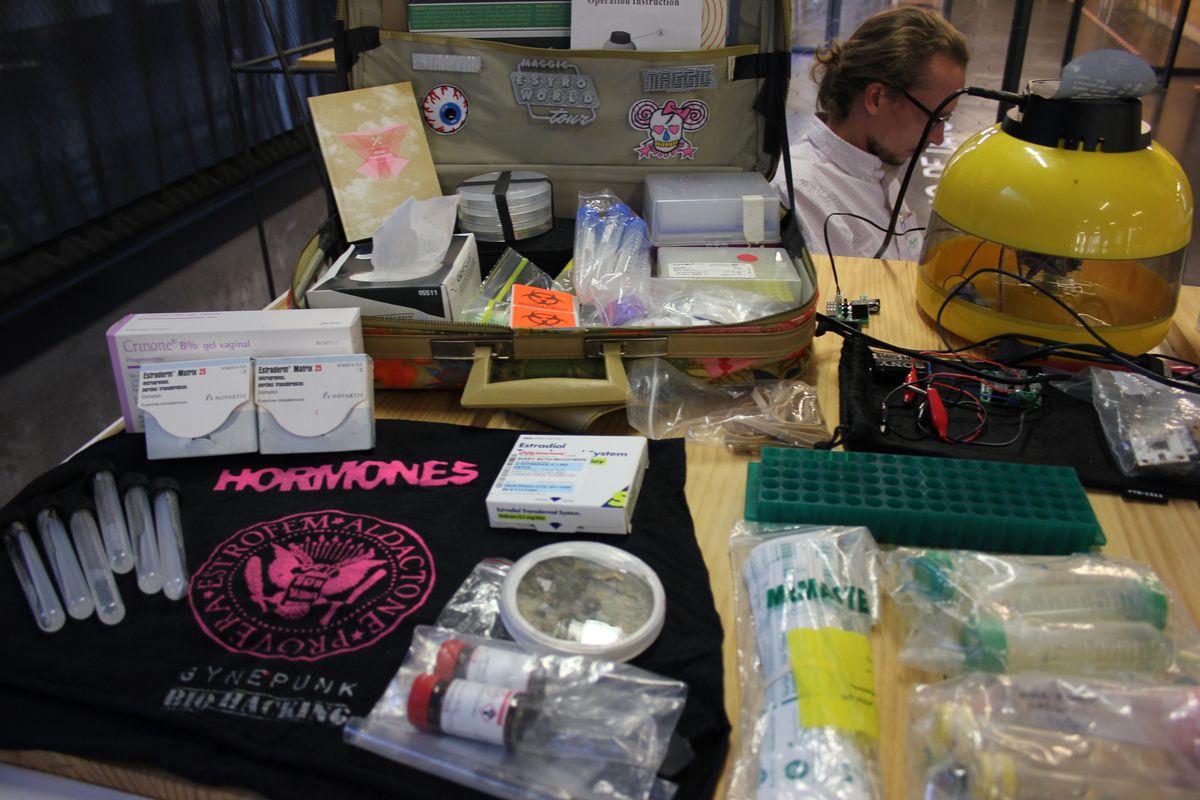
With their project Open Source Estrogen, Byron Rich and Mary Maggic (alias Mary Tsang, director of the documentary series Diysect) are developing a critical analysis of the influence of estrogens and endocrine disruptors on our body and our environment. And in order to share it with the public, they created Estrofem Lab.
This traveling estrogen hacklab fits into a suitcase. It contains various DIY tools and protocols to hack hormones in any circumstance and raise good questions: How can we make our own hormones for contraception? How can we design sensors that play a role in citizen analysis of local water? Can we eliminate hormonal toxicity from the environment? In search of answers, the duo regularly unpack their suitcase at citizen-oriented, artistic and DIYbio events, such as the ISEA conference in Hong Kong, the Art Meets Radical Openness festival in Vienna, and Interactivos? at Medialab-Prado last June in Madrid (Makery was there).
“Open Source Estrogen” during Interactivos? at Medialab-Prado in June 2016:
